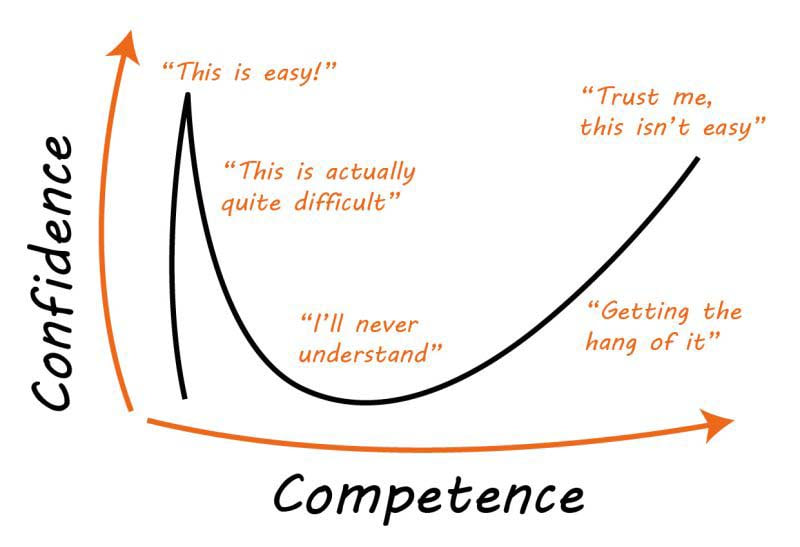
The hypothesis about the existence of this effect was put forward in 1999 by American social psychologists Justin Kruger and David Dunning. To scientifically confirm it, they conducted several studies among students.
Here is the definition of this concept given in psychology: a metacognitive distortion in which people with a low level of qualifications make professional mistakes without being completely aware of them. The result is inflated ideas about one’s own importance and abilities.
If you explain the Dunning-Kruger effect in simple terms, it is a false confidence in your own professionalism. Such people are called differently: amateurs, lamer, etc.
There is also an aspect in psychology that is opposite to the Dunning-Kruger effect in relation to the results of one’s professional activities. When a highly qualified master, an expert in his craft, a real talent, downplays his importance, is not confident in his own decisions and assesses his abilities too modestly.

Why do people fall victim to the Dunning-Kruger effect?
- low IQ as a result of natural data (heredity);
- errors of upbringing (parents/teachers/relatives/environment) undeservedly extolled the child’s talents and abilities, instilling in him false confidence in his own strengths and capabilities;
- gaps in knowledge for various reasons: failure to attend classes, purchased diploma, irresponsible attitude to study;
- self-confidence, high self-esteem, love of fame and success, superficiality and frivolity.
There is one graphical test that is used to detect the Dunning-Kruger effect.
- Draw a large square across the entire sheet. He will represent you.
- Paint over it with a pencil exactly as much as you feel like a competent person.
- if you have completely filled in the square, you are a prime example of the Dunning-Kruger effect;
- if you have painted over more than 75%, you have either recently gotten rid of this effect, or, on the contrary, are showing a tendency towards it;
- if you have painted over about 50% – everything is in order, from the point of view of psychologists, this is a normal assessment of your abilities;
- if less than 50% is shaded, your professional self-esteem is too low.
This test is often used by HR managers and company executives when hiring candidates. It helps them distinguish between amateur beginners and true professionals.
The Dunning-Kruger effect interferes with the life of not only its bearer, but also those who have to deal with it in the professional field.
How to deal with this phenomenon?
- Take the Dunning-Kruger effect test. Make sure it is there.
- Diagnose your own mistakes in the professional sphere. How often do they happen? What causes them? Admit that you yourself are to blame for them.
- Engage in self-improvement: enroll in advanced training courses, read specialized scientific literature.
- Consult with older and more experienced colleagues.
- Learn self-criticism.
Leave a Reply